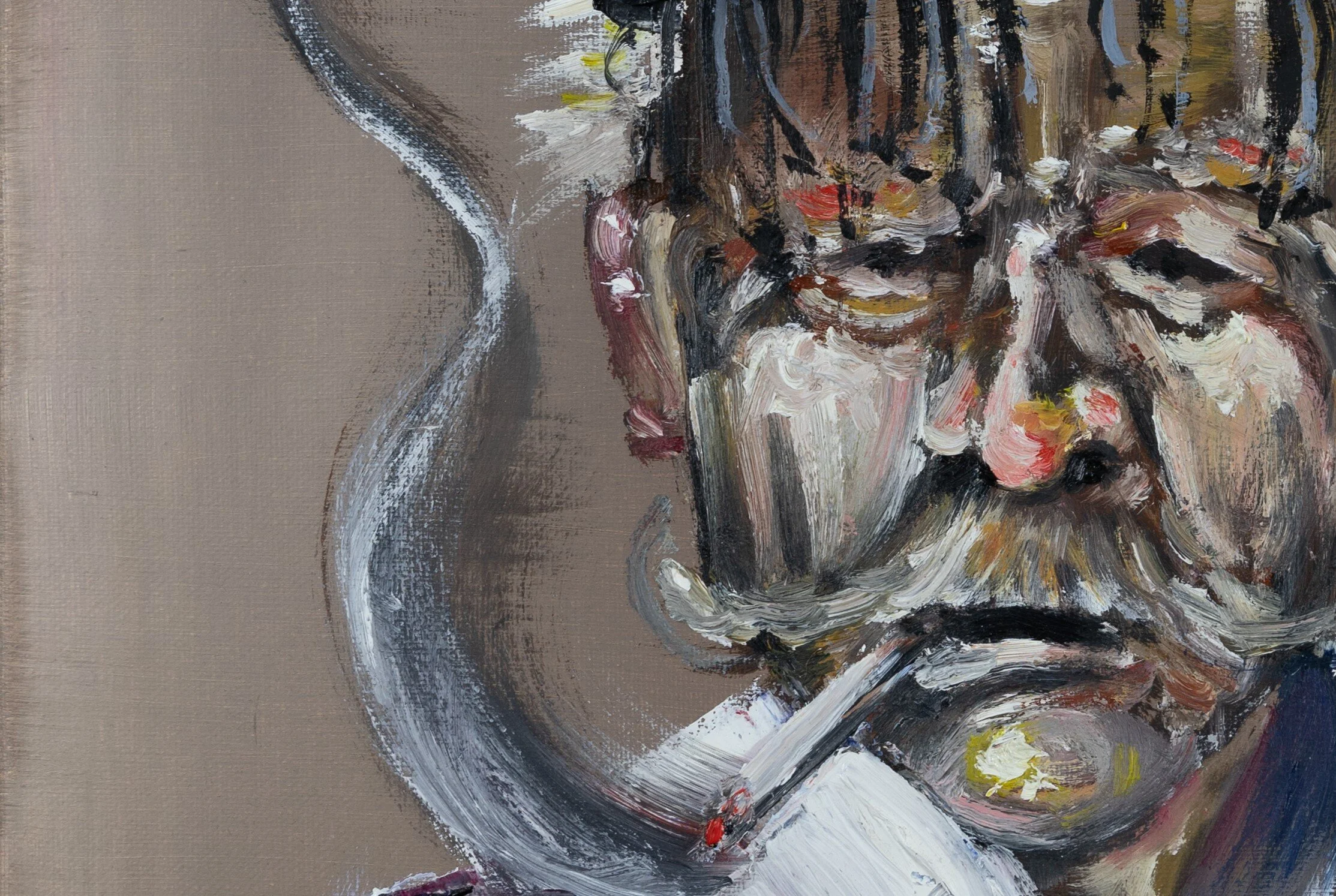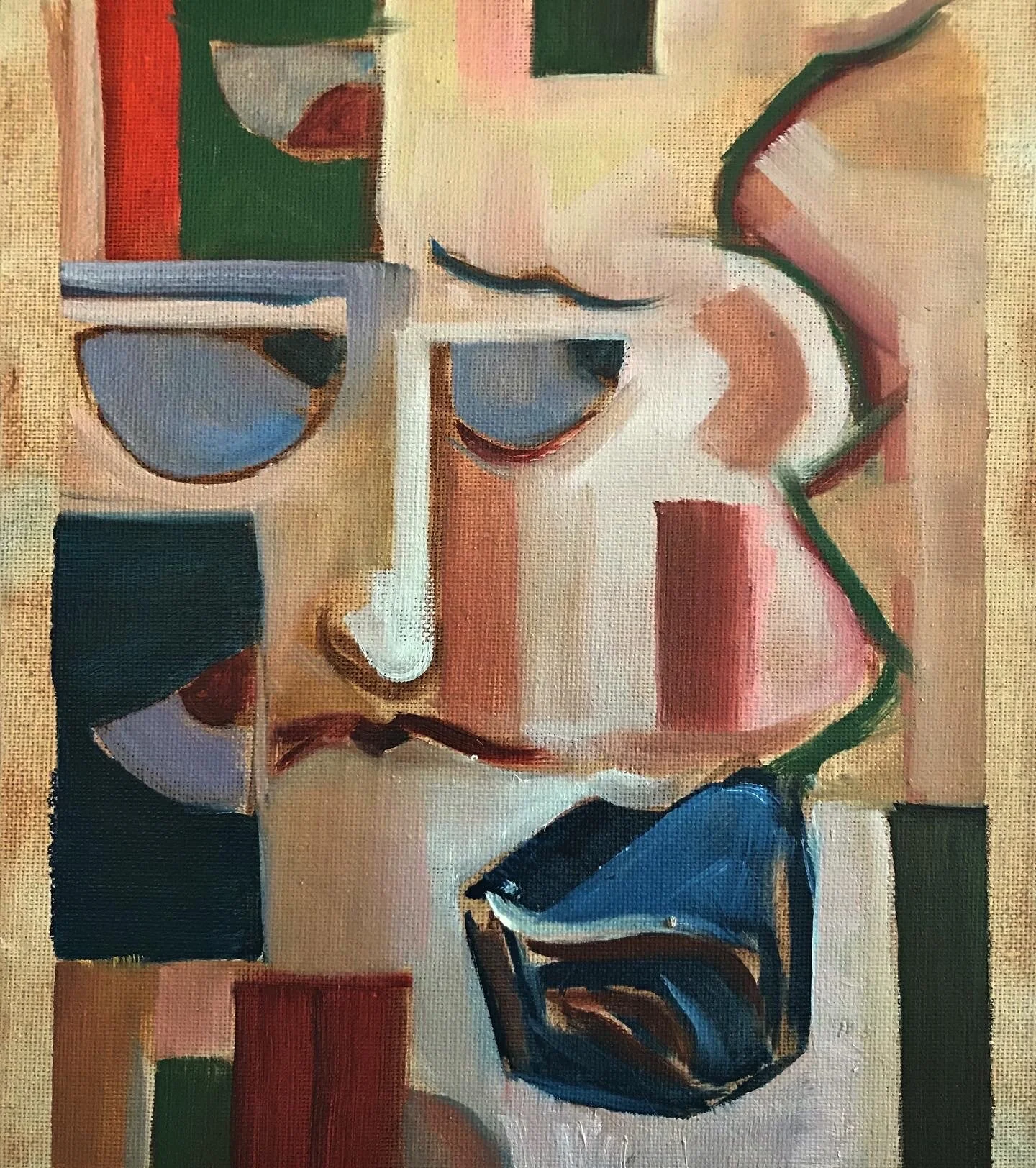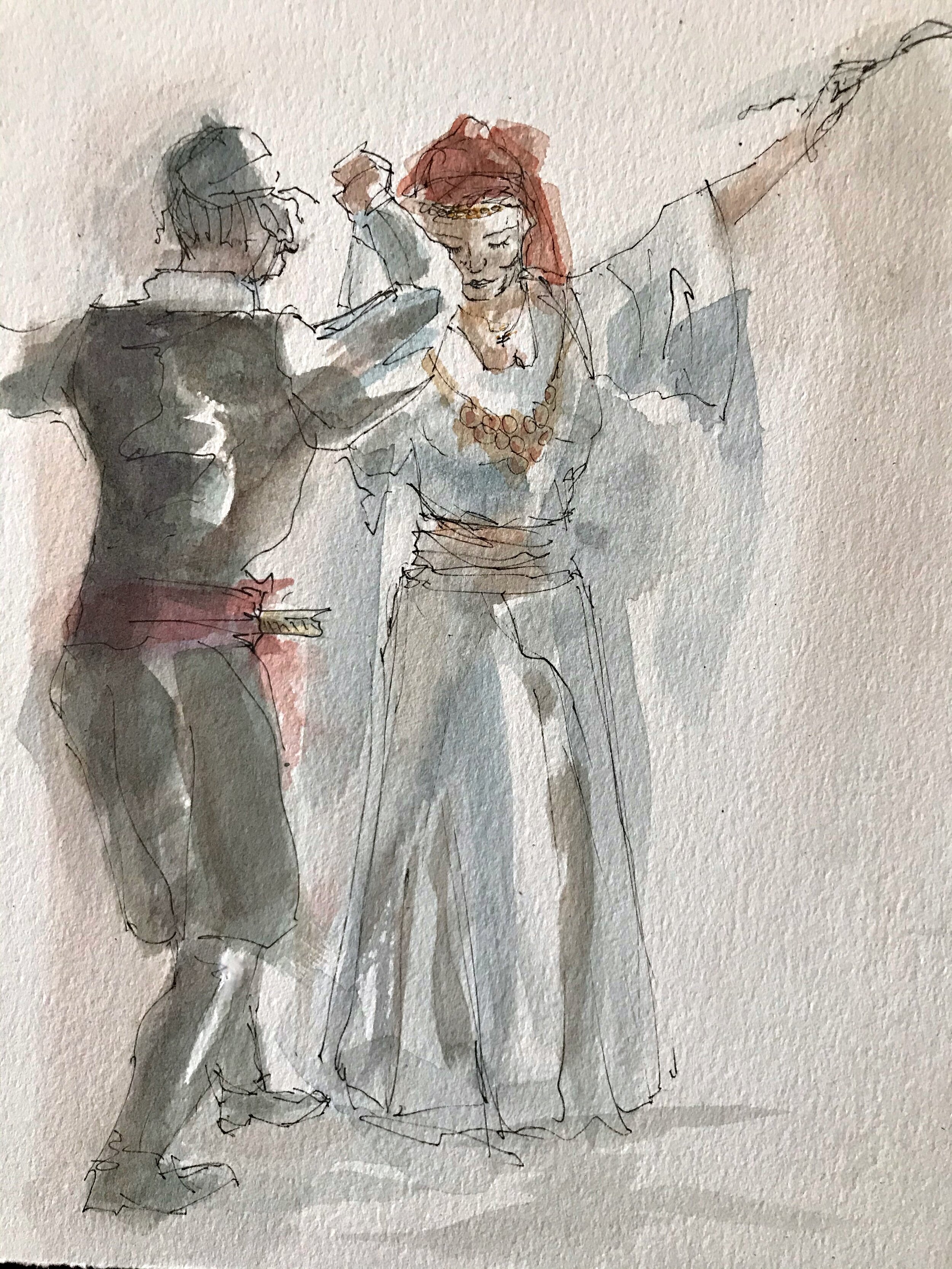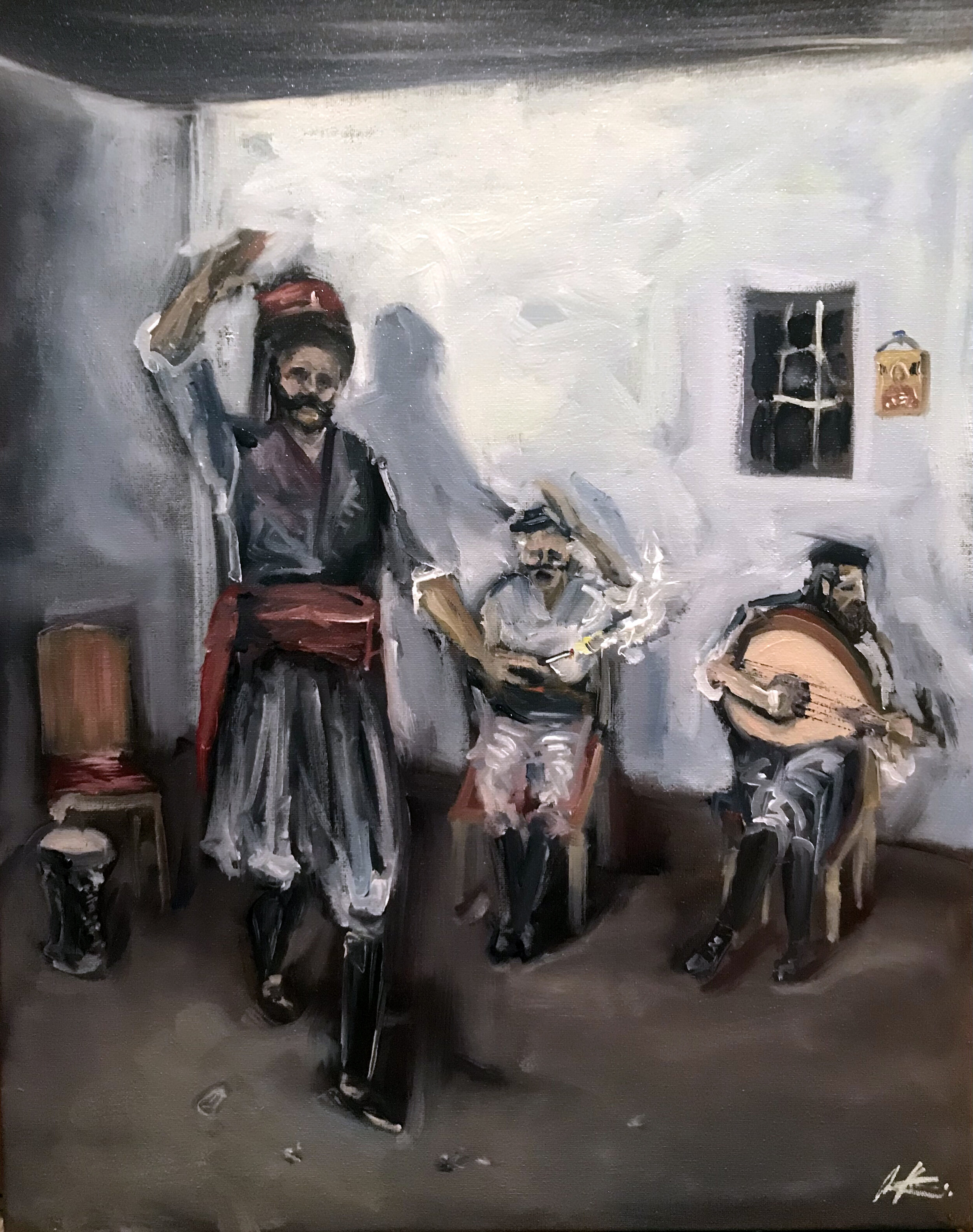
Hellenism.
Hellenic Artwork
Triangulated onto a canvas through multiple mediums, I use my various fields of cultural expression to become one with my Hellenic culture—to become akin to that unique c0nnection to πατρίδα, or homeland.
Costumes Without Dancers Series
In this series I delve deep into the nature of Epirotic dancing and the fiery yellow orange ecstasy I feel when dancing it. However when I perform it, I realize my true self and become so in tune with my passion and emotional pain that in doing so I merge my interpersonality with my conscious movement and all that is left is the costume. That costume that has been worn, time and time again, for many years, by many nameless dancers. Upon this junction during the performance, I realize the dancer isn’t there, it’s the impression of both his movement and his emotion that causes the legs to move and the fustanella to sashay. My costumes has been around and taken the form and essence of the dancer to which I am just another soul to feed it’s repertoire of movement. The three pieces are all named after songs and dances that are part of a suite of Epirotic performances.
Thracian Dancers, (2021)
Two Thracian Authentic costumes fill the form of their respective dancers, sashaying to the sound of the gaida (γκάιντα) and the daouli (νταούλι). Done in watercolor and ink, this piece was done by envisioning myself dancing traditional Thracian dances in the third person.
Sold
Το Τουμπελέκι, (2023)
In a hidden Greek taverna, the toubeleki (drum) player can’t resist the sweet sound of the music and must, through his life’s pain, transcribe on the ground that which his soul yearns to say. He leaves his drum down to dance, slow and melodically to the song his fellow musicians have prescribed to him.
Η ζεϊμπέκια Του Μαγκα (2023)
In an Eadweard Muybridge fashion, I chose to capture the motion of a zeibekiko by using three still frames set one after the other. A man dances slowly to a melody that reminds him of the pain in his heart.

Άρωμα Του Τεκε
Άρωμα Του Τεκε (2022), Aroma of the Teke (2022)
Άρωμα Του Τεκε describes the dark hash dens brought from Turkey to Greece by a Greek exile from Smyrna. Refugees who came from Smyrna brought with them anatolian styles of music and culture that forever changed Greek Music. These two musicians, one playing the violin and the other a qanun, are conjured by the aroma of the Teke—burning Hashish from a nargile and the smoke of a lit cigarette passing in front of a barred window leading to nowhere.

Οι Γεροντες
Οι Γεροντες (The Elders), (2022)
The old men of the village dance a Tsamiko (τσάμικο) together in their wartime clothes. On the left, an elder is dancing the steps on the Earth as if writing what his soul wants him to say; his heart injects the bloodstream with the warm years of pain and it forces him to improvise a heavy distraught spin—slow and filled with αρχοντια.

Greek Portrait Series
Portraits of Greek heroes and dancers alike from different regions in their respected garb; weary eyes from the decades of life’s wear on their souls.

The Pontian, (2020) Sold*

The Klepht, (2020) Sold*

The Cretan, (2020) Sold*

Old Cretan Man, (2019) Sold*

Greek Portraits 200th Anniversary Edition

The Cretan: 200th Anniversary Edition (2021) Sold*

The Klepht: 200th Anniversary Edition (2021) Sold*

The Pontian: 200 Anniversary Edition (2021) Sold*
The Three Dancers, (2020)
On the stage holding onto the hand of my dance teacher I peer down at my brother who is spinning heavily, hair flustered; the energy contained in the hands and passed through the arms. I am on a stage but I truly feel, in the perfectly fitted clothes and surrounded by the aura of melodic sound which seeps it’s way into the very foundation of my bones, that I am in Pogoni (Πωγώνι)—a little town in Epirus.



The Princess and The Shepherd, (2022)
Inspired by songs such as “Ο μαντρατζης,” “Ο Βοσκός και Ο Βασιλιάς,” and poems such as Ερωτοκριτος, this triptych gives an account of the love between a shepherd and a princess. The mediating painting depicts the disconnected dichotomy of love through class—white rose of nobility and a poor mans shepherd cane. From the left, A white nose, weary eyes, and a blue rose symbolize, respectively, the nobility and deep sadness associated with the knowledge that one can’t marry outside of nobility; the eyes of the village look at her with an acute judgment deep within the background. The Shepherd on the right through his bright array of colors has enthralling love for the princess and has a bright red rose to give—but not his sheep.



Στιβάνια (Stivania), (2023)
Listening to each of the dances, I let myself become the dancers and my ink pen created line structure based on the ebbs and flows of the jittering Kissamitiko violin and bittersweet laouto. Forcing my imagination to step into third person, I took a mental snapshot of how I would dance to the music I listened too and painted with regards to that; the colors of the music guiding me through the process itself.
Sold
Μανιάτες (Maniates), 2022
Done in watercolor and Ink, these two traditional dancers from Mani dressed in authentic costumes, are completed utilizing an understanding from the practice of traditional dance. In the third person, I can envision myself dancing and recreate an authentic rendition of the steps, cataloging a moment in the movements of these traditional dancers from Mani.
Sold












